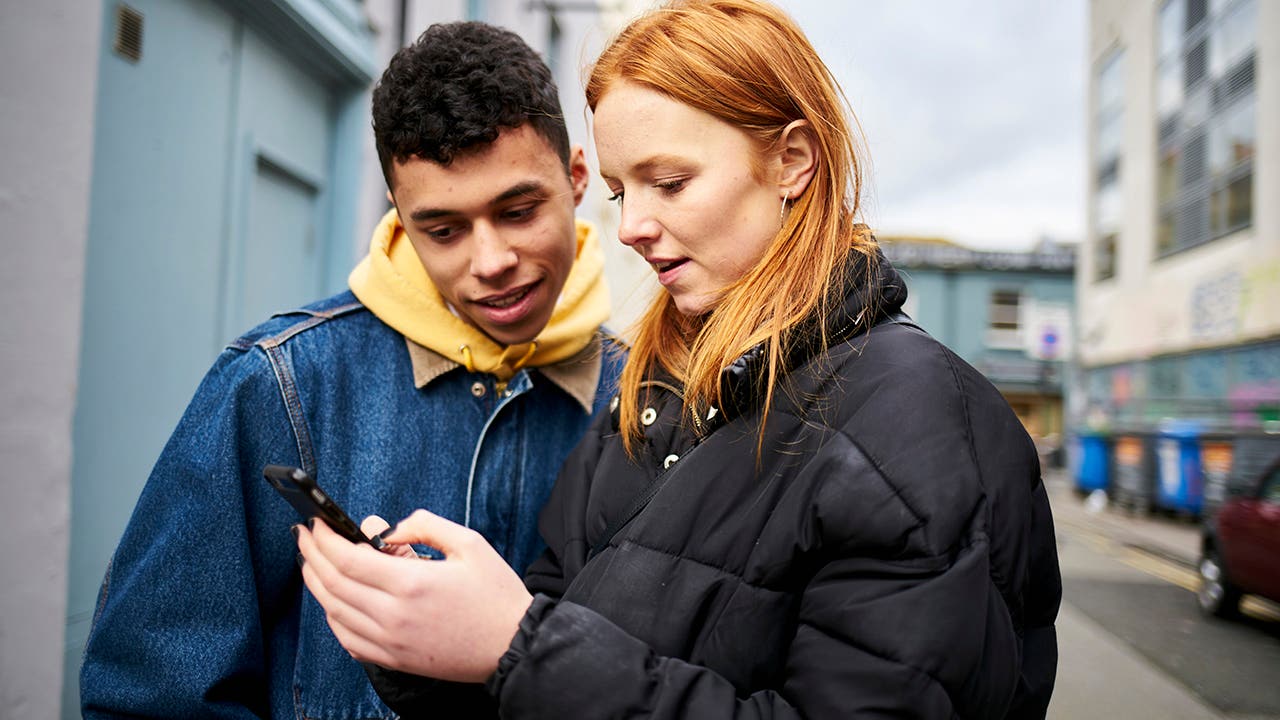What are peer-to-peer payments?




Peer-to-peer (P2P) payment services allow users to send money to another person’s bank account through a third-party website or mobile app.
If you’ve ever needed to pay someone back for a coffee or split a meal, you might have heard of popular platforms like Venmo, Zelle or Cash App.
Many consumers use P2P services, but you might still be wondering how they work and whether they’re safe. We’ll explore how P2P payments work, compare the most popular services, and discuss their safety and speed.
Key takeaways
- P2P payment services facilitate transactions between two parties with separate bank accounts through a third-party website or mobile app.
- Each P2P service has different rules for linking accounts, and some may charge fees for instant transfers or international payments.
- While convenient, P2P payments carry some risks. Users should protect their login information and only send money to trusted recipients.
How P2P payments work
Once you sign up for a P2P payment platform, here’s the process you’ll need to go through before you can make or receive a payment:
- You’ll first need to link a personal bank account, debit card or credit card, depending on the platform’s requirements.
- Find the recipient using their username, email, or phone number, depending on the P2P platform.
- Enter the amount you want to send and confirm the transaction.
- The funds are then transferred from your linked account to the recipient’s P2P account.
- The recipient may need to take an additional step to transfer the funds from their P2P account to their linked bank account, which can take anywhere from a few seconds to several business days.
Who offers P2P payments?
There are many P2P services on the market, but here are some of the most popular ones.
Zelle
- Instant transfer fee: None
- Standard transfer time: Same day
- International transfers: No, only between U.S. bank accounts
Zelle is a P2P service integrated into many banking apps, including Bank of America, Chase, and Wells Fargo. Users can send money directly to another Zelle user’s bank account using their email or phone number, typically within a few minutes.
Read more: Our guide to using Zelle.
PayPal
- Instant transfer fee: 1.75% of amount transferred
- Standard transfer time: Usually 1 business day, but up to 3
- International transfers: 5% plus an international fee between $0.99 and $4.99, plus domestic and currency conversion, if applicable
PayPal is a global P2P service, meaning that users can send and receive money internationally. PayPal also offers a service called Xoom that comes with a user’s PayPal account and converts foreign currency.
Users also have the option to make instant transfers from their PayPal to their bank accounts for a fee, or else they may make a standard transfer for free, which takes one to three business days.
Read more: Our guide to using PayPal.
Venmo
- Instant transfer fee: 1.75%; minimum of $0.25, maximum of $25
- Standard transfer time: 1-2 business days
- International transfers: No, U.S. only
Venmo, owned by PayPal, is a popular mobile P2P service that allows users to send money and split expenses with friends. It offers instant transfers for a fee or free standard transfers that take 1-3 business days.
Read more: Our guide to using Venmo.
Cash App
- Instant transfer fee: 0.5% – 1.75%; minimum $0.25
- Standard transfer time: 1-3 business days
- International transfers: 2% (not available in all countries); waived for some Cash App Card users
Cash App is a mobile P2P service that allows users to send money, invest in stocks and cryptocurrencies, and use a free debit card. Instant transfers incur a fee, while standard transfers are free.
Read more: Our guide to using Cash App.
Apple Cash
- Instant transfer fee: 1.5%; minimum $0.25, maximum $15
- Standard transfer time: 1–3 business days
- International transfers: No; U.S. only
Apple Cash functions as a digital card in the Apple Wallet app, allowing iPhone users to send money to each other and make purchases using their Apple Cash balance. Transfers to a bank account take one to three business days.
Read more: Our guide to using Apple Cash.
How much do P2P payments cost?
Most P2P payment services are free to use, but some charge fees for:
- Instant transfers: Some apps offer instant transfers to a linked account for a fee, while standard transfers are free but take longer.
- Debit or credit card transactions: Sending money from a linked debit or credit card may incur a fee, while bank account transfers are usually free.
- International transactions: Some services charge a fee for sending money internationally, in addition to potential currency conversion fees.
Which P2P payment provider is best?
The best P2P platform depends largely on your needs. P2P services provided by a bank, like Zelle, may be more convenient because they can be accessed directly from the bank’s app. But they do have some limitations, such as who you’re able to pay.
Which service your family and friends use may also factor into your decision about which app to choose. If a recipient uses Venmo, for example, but the sender only downloads Cash App, they won’t be able to send money to each other.
If you need to send money overseas, you’ll need to find service that offers international payments. Learn more in our guide to international money transfers.
| P2P service | Best for… |
| Zelle | Processing payments directly to or from a bank account |
| PayPal | International payments or transactions using different currencies |
| Venmo | Casual payments between friends or local merchants |
| Cash App | Users who want the option to invest their balance in stocks or cryptocurrency |
| Apple Cash | Transfers between iPhone users |
Are P2P payments safe?
While P2P payment apps are convenient, they carry some risks. The Consumer Financial Protection Bureau (CFPB) regulates these services, but enforcement of consumer protections can be inconsistent. Users are often held responsible for errors, such as sending money to a scammer.
“The companies that own these apps feel that they aren’t covered by some of the laws that regulate payment services,” says Linda Sherry, a consumer advocate and former director at Consumer Action, a nonprofit. “It’s this large loophole where people can be defrauded pretty easily, when a bad actor convinces consumers they’re a member of the bank or in charge of fraud at the bank.”
Sherry recommends that consumers only use P2P payments among people they know. “Know who you are sending money to, and be suspicious,” Sherry says. “If it sounds too good to be true, it probably is.”
How do P2P payments safeguard transaction information?
Security technology varies between P2P payment platforms. Many P2P services use encryption to protect sensitive data, such as account numbers and transaction details. This means that your information is turned into a complex code before it’s sent over the internet, making it difficult for hackers to intercept and decipher.
In addition to encryption, P2P services often use secure socket layer (SSL) technology to provide an extra layer of security. SSL technology ensures that only the intended recipient can access your information. Some platforms also use two-factor authentication, which adds an extra layer of protection against unauthorized account access.
Some P2P payment networks incorporate blockchain technology to increase the security, transparency and traceability of transactions. The inclusion of cryptocurrencies in these platforms helps facilitate swift, borderless and cost-effective transactions. What’s more, artificial intelligence is being used in the detection and prevention of fraud in P2P payment systems.
How do P2P payment platforms protect users from potential scams?
P2P payment platforms employ various strategies to protect users from scams. Many services provide guidelines on common scam tactics and how to avoid them. Some may also use algorithms and AI to identify and block suspicious activity, as well as dedicated security teams to investigate potential fraud.
Also, many P2P services offer some form of transaction dispute process, which allows users to report and request reviews of suspicious transactions. P2P payments are protected under the Electronic Funds Transfer Act, which outlines consumers’ rights to dispute and be recompensed for unauthorized transactions.
However, while these measures reduce the risk of scams, they cannot eliminate it entirely. Users should use caution when using P2P payment platforms.
Are P2P payments fast?
P2P payments can take anywhere from a few seconds to several days to go through to a user’s bank account.
Some services, like Zelle, send funds directly to the recipient’s bank account, making transfers nearly instant. Other services require the recipient to manually transfer funds from the app to their bank account, which can take several days.
Many P2P apps offer instant transfers for a fee, while standard transfers are free but slower.
Alternatives to P2P payments
Other payment methods include:
- Direct wire transfers. Wire transfers may be suitable for sending large amounts quickly, as many P2P services limit how much users are allowed to send. However, fees for wire transfers can be lofty, ranging up to $50.
- Checks. Thisis a traditional payment method, but can take several days to clear and is not immune to scams.
- Money orders. Like checks, money orders are a prepaid paper payment method, and can be cashed and deposited like a check.
- Online bill pay. This option is convenient for paying bills, but cannot be used to send money to individuals.
Read more: 7 best ways to send money
Bottom line
As consumers spend more of their daily lives online, they can expect P2P services to become more widespread and banking to become more digital overall.
P2P payments can add convenience to everyday transactions, like splitting a bill or sending some aid to a friend or relative. But with any digital financial services, there’s always the risk of being exposed to potential cybercrime. To stay safe, protect your login information and know who you’re sending money to, so the funds don’t end up in a scammer’s hands.
Why we ask for feedback Your feedback helps us improve our content and services. It takes less than a minute to complete.
Your responses are anonymous and will only be used for improving our website.




